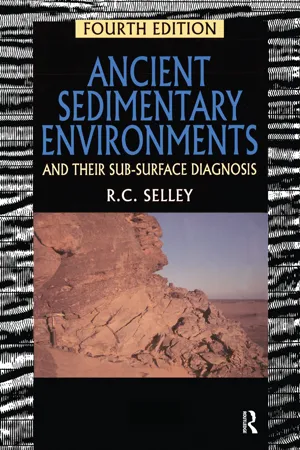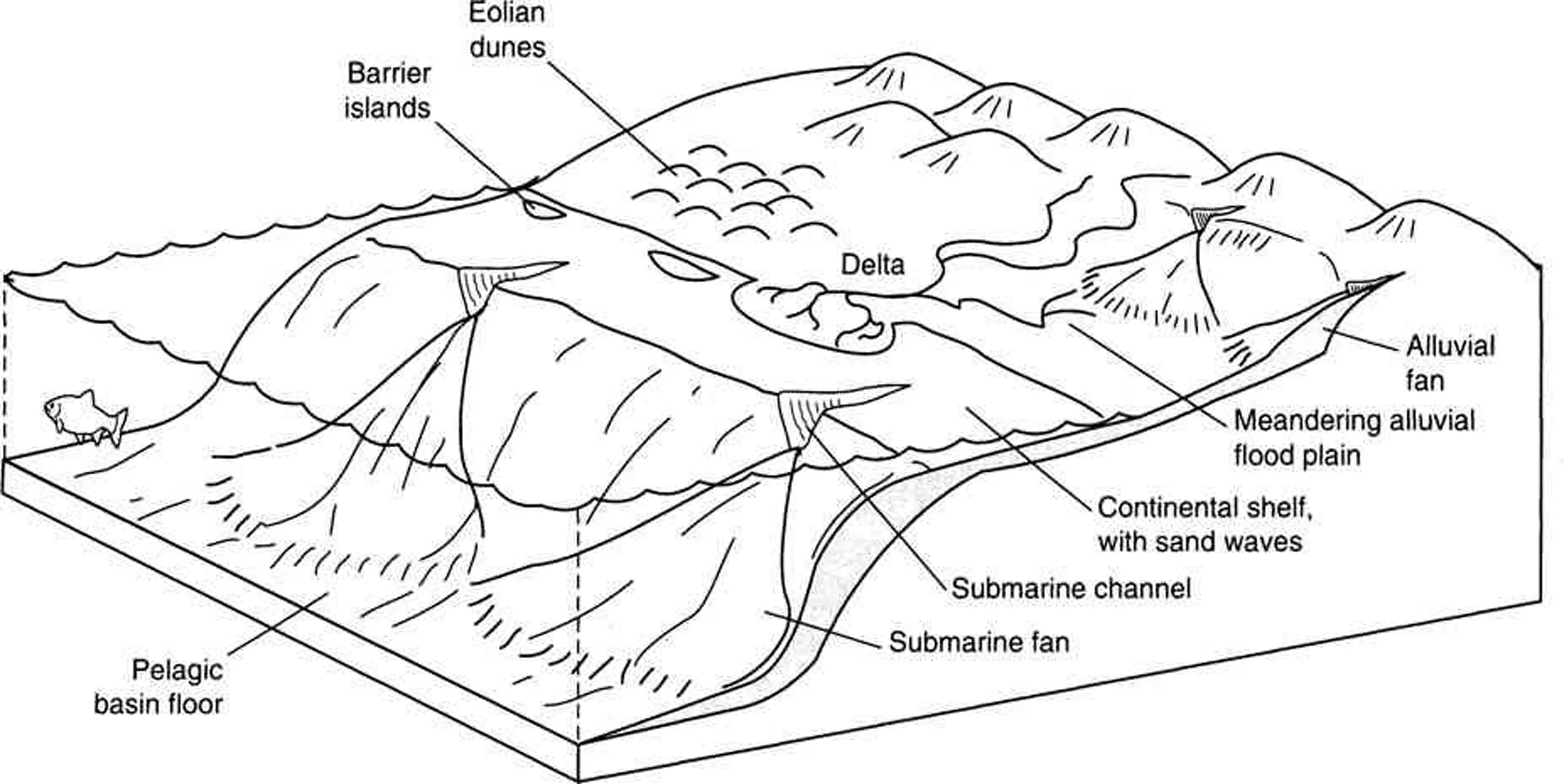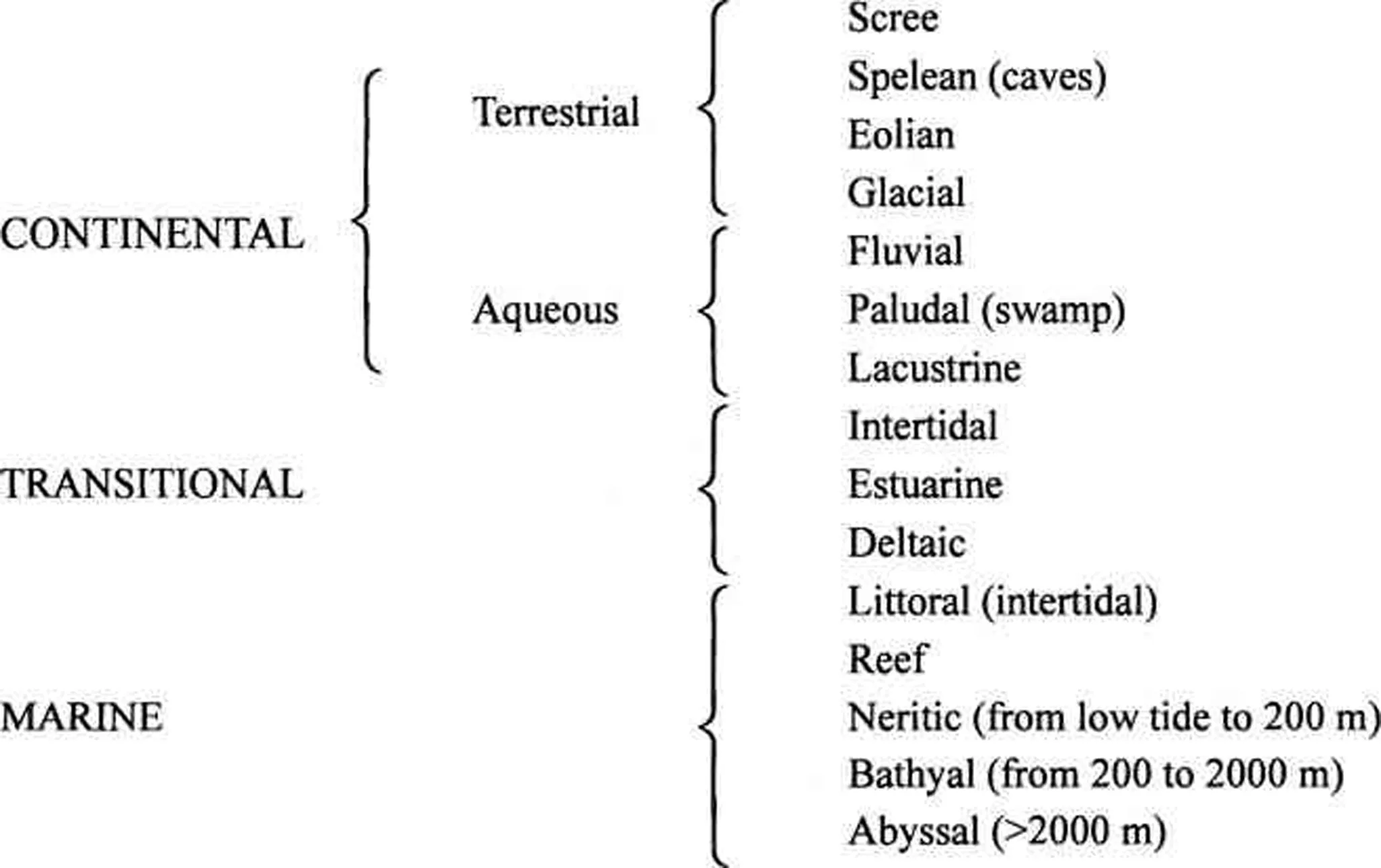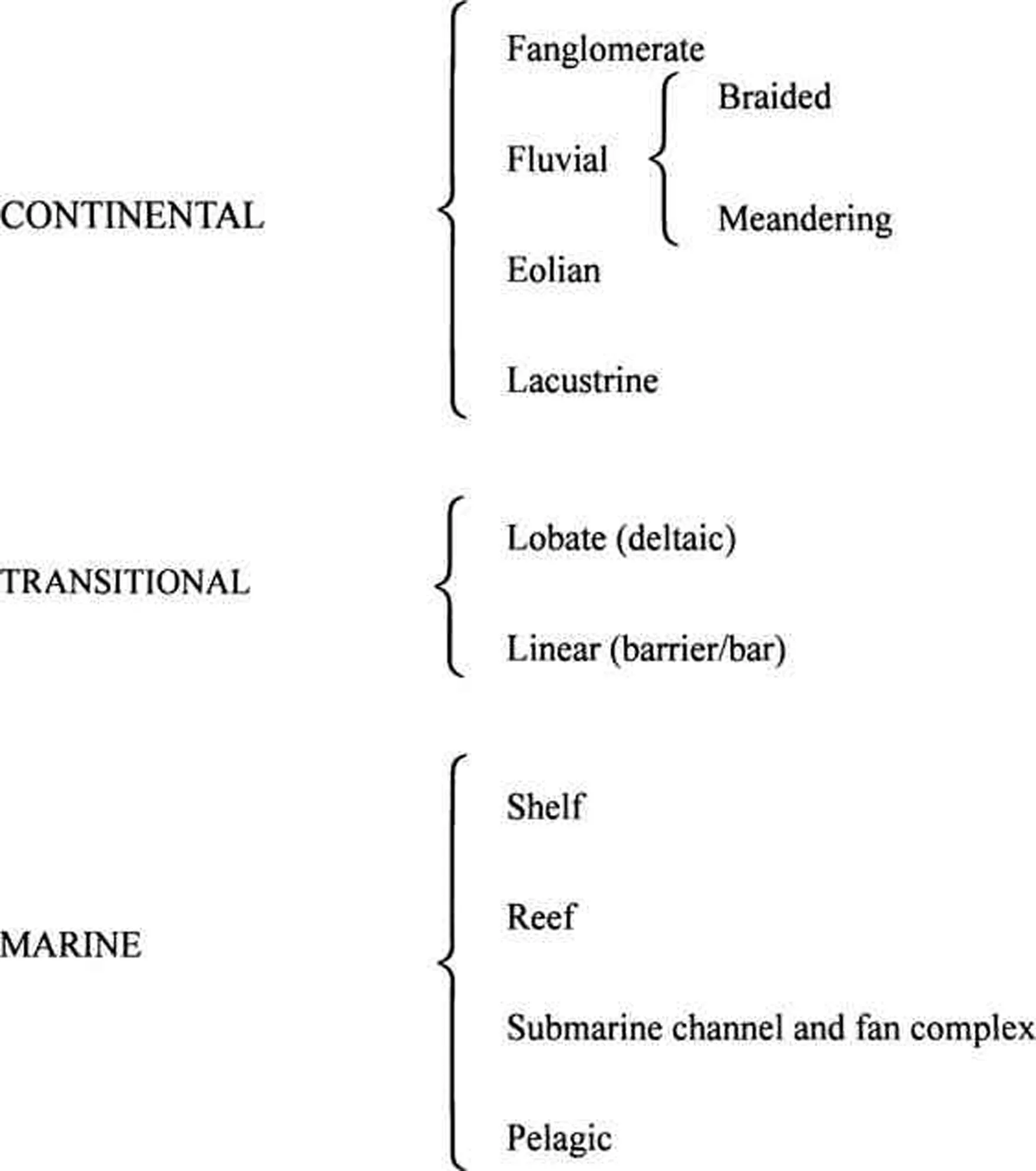
eBook - ePub
Ancient Sedimentary Environments
And Their Sub-surface Diagnosis
- 318 pages
- English
- ePUB (mobile friendly)
- Available on iOS & Android
eBook - ePub
About this book
This edition retains the case history approach to emphasize the subsurface diagnosis of environments using seismic and geophysical well logs and their application to petroleum exploration and production. This book should be of interest to undergraduates in sedimentology and petroleum geology.
Frequently asked questions
Yes, you can cancel anytime from the Subscription tab in your account settings on the Perlego website. Your subscription will stay active until the end of your current billing period. Learn how to cancel your subscription.
No, books cannot be downloaded as external files, such as PDFs, for use outside of Perlego. However, you can download books within the Perlego app for offline reading on mobile or tablet. Learn more here.
Perlego offers two plans: Essential and Complete
- Essential is ideal for learners and professionals who enjoy exploring a wide range of subjects. Access the Essential Library with 800,000+ trusted titles and best-sellers across business, personal growth, and the humanities. Includes unlimited reading time and Standard Read Aloud voice.
- Complete: Perfect for advanced learners and researchers needing full, unrestricted access. Unlock 1.4M+ books across hundreds of subjects, including academic and specialized titles. The Complete Plan also includes advanced features like Premium Read Aloud and Research Assistant.
We are an online textbook subscription service, where you can get access to an entire online library for less than the price of a single book per month. With over 1 million books across 1000+ topics, we’ve got you covered! Learn more here.
Look out for the read-aloud symbol on your next book to see if you can listen to it. The read-aloud tool reads text aloud for you, highlighting the text as it is being read. You can pause it, speed it up and slow it down. Learn more here.
Yes! You can use the Perlego app on both iOS or Android devices to read anytime, anywhere — even offline. Perfect for commutes or when you’re on the go.
Please note we cannot support devices running on iOS 13 and Android 7 or earlier. Learn more about using the app.
Please note we cannot support devices running on iOS 13 and Android 7 or earlier. Learn more about using the app.
Yes, you can access Ancient Sedimentary Environments by Richard C. Selley,Selley, Richard C. in PDF and/or ePUB format, as well as other popular books in Physical Sciences & Geography. We have over one million books available in our catalogue for you to explore.
Information
1 Concepts and methods
INTRODUCTION
This chapter introduces and discusses the various concepts that are employed in the interpretation of the depositional environments of ancient sedimentary rocks. It includes a review of how environments may be classified, a discussion of the concepts of facies and models, and an account of how facies analysis relates to stratigraphy in general., and to seismic sequence stratigraphy in particular.
SEDIMENTARY ENVIRONMENTS
A sedimentary environment may be defined as a part of the earth’s surface that is physically, chemically and biologically distinct from adjacent areas. Examples include deltas, reefs and submarine fans (Figure 1.1).
The physical variables that affect a sedimentary environment include temperature, water depth, current velocity, sunlight, wind speed and direction, and so forth. The chemical variables that affect a sedimentary environment include water composition (salinity), and the mineralogy of both the autochthonous and allochthonous sediment. The biological variables that affect a sedimentary environment include, on land, soil, grass or forest cover, and the life styles of land animals, especially the number and amount of herbivores. Under water the type and abundance of animals and plants exert a major influence on the sedimentary environment, particularly in generating carbonate material. These physical., chemical and biological variables form an intricately interconnected system. A small change in one of the parameters may have a significant effect on one or more of the others. The effect of mankind on modern environments is an obvious instance.
A cursory view of the globe shows that there are many different types of sedimentary environment, and that these occur repeatedly around the world. There are many schemes that attempt to classify sedimentary environments. Table 1.1 illustrates what may best be termed the ‘classic’ scheme.Though hallowed by time this classification has two main limitations for the purpose of environmental interpretation. The scheme contains several environments which are either erosional, equilibrial, or of only limited significance as depositors of sediments. More seriously, marine environments are differentiated by water depth.


Water depth is a very obvious and easily measured parameter of modern environments. It is, however, not a major controlling factor on sedimentary processes. Furthermore, it is very difficult to determine the water depths in which ancient sediments were deposited, beyond such broad zones as intertidal, shelf and ‘pelagic’, meaning of the open sea. Interpretations of ancient water depths are largely based on palaeontology, particularly using foraminifera. It is widely recognized, however, that foraminiferal assemblages may correlate with temperature as much as depth. Thus changes in ancient faunal assemblages may indicate climatic fluctuations as much as depth changes.
Look at Figure 1.1 again. Note that in addition to the obvious groupings of the various environments in to continental shoreline and marine, there is another trinity of environmental types, namely environments of erosion, environments of non-deposition, or equilibrium, and environments of deposition. These are worthy of consideration.
Environments of erosion are areas that are predominantly continental and terrestrial, apart from cliffed coastlines. They are thus only of concern in so far as they are the sources for terrigenous detritus. The detrital mineralogy of a sand exerts a strong control on its diagenesis and porosity evolution, but is of little significance in terms of its environment of deposition.
Environments of non-deposition, or equilibrium, are areas where there is neither erosion nor net deposition taking place, though sediment may be transported across them. Such equilibrial environments may be found on land, on continental shelves, and even on ocean floors. Terrestrial equilibrial surfaces characterize many deserts. For example, travellers crossing the vast desert plains of the Sahara sometimes encounter the stone circles of old camp fires. Closer inspection may reveal the beer cans of a geological field party, the land mines of a World War II patrol, or the flint instruments of the Stone Age. The last of these indicate the equilibrial nature of the desert surface, where neither deposition nor erosion has occurred for tens of thousands of years.
Terrestrial equilibrial surfaces may be marked by palaeosols that may include cemented horizons of caliche, ferrocrete, or silcrete. As discussed in Chapter 9 many continental shelves are equilibrial surfaces, across which sand may be driven by tidal, wind or storm generated currents, leaving little trace of their passage. Shelf environments may thus leave nothing in the stratigraphic record beyond an unconformity, a lag gravel and, in carbonate sediments, a hard ground. Surfaces of non-deposition or equilibrium also occur in deep marine environments. Some modern ocean floors have sedimentation rates so negligible that the teeth of long extinct species of shark lie unburied on the ocean bed. Environments of equilibrium or non-deposition are represented in the stratigraphic record by unconformities. Furthermore, because they are commonly marked by a cemented layer overlain by less cemented sediment, they often show up on seismic sections as prominent reflectors and sequence boundaries.
Lastly, there is the third type of environment, the environment of deposition. This type occurs in continental, shoreline and open marine settings. It is the depositional environment that is of principal concern and interest to sedimentologists, because this is the environment that actually generates sedimentary sequences that are preserved in the stratigraphic column.

This recognition of environments of erosion, equilibrium and deposition may be used to modify the classic environmental classification shown in Table 1.1 and discussed earlier. Table 1.2 shows the result. This scheme retains the broad grouping into continental, shoreline and marine environments, but now omits the rare, obscure, erosional and equilibrial environments. This scheme is, therefore, not a classification of sedimentary environments. It is a classification of depositional sedimentary environments. Note also that the marine environmental grouping avoids reference to water depth. This scheme is much more appropriate for geologists to use when studying ancient sedimentary environments. It will therefore be adopted in this book, and forms the framework for the subsequent chapters.
When classifying sedimentary environments it is often hard to define their boundaries precisely. Rivers merge gradually in to deltas, and so forth. Furthermore most environments can be divided in to sub-environments. For instance fluvial environments contain active and abandoned channels, levees, crevasse splay and flood basin sub-environments. This hierarchical system of environments and sub-environments will be illustrated in subsequent chapters.
SEDIMENTARY FACIES
A second important aspect of environmental interpretation is appreciation of what is meant by the term sedimentary facies. The regio...
Table of contents
- Cover
- Half Title
- Title Page
- Copyright Page
- Table of Contents
- Preface
- Preface to the third edition
- Preface to the second edition
- Preface to the first edition
- Acknowledgements
- A note about references
- 1 Concepts and methods
- 2 Methods of environmental interpretation
- 3 River deposits
- 4 Wind-blown deposits
- 5 Lake deposits
- 6 Deltas
- 7 Linear terrigenous shorelines
- 8 Mixed terrigenous: carbonate shorelines
- 9 Terrigenous shelf sediments
- 10 Carbonate shelves
- 11 Reefs
- 12 Deep water sands
- 13 Pelagic deposits
- Index